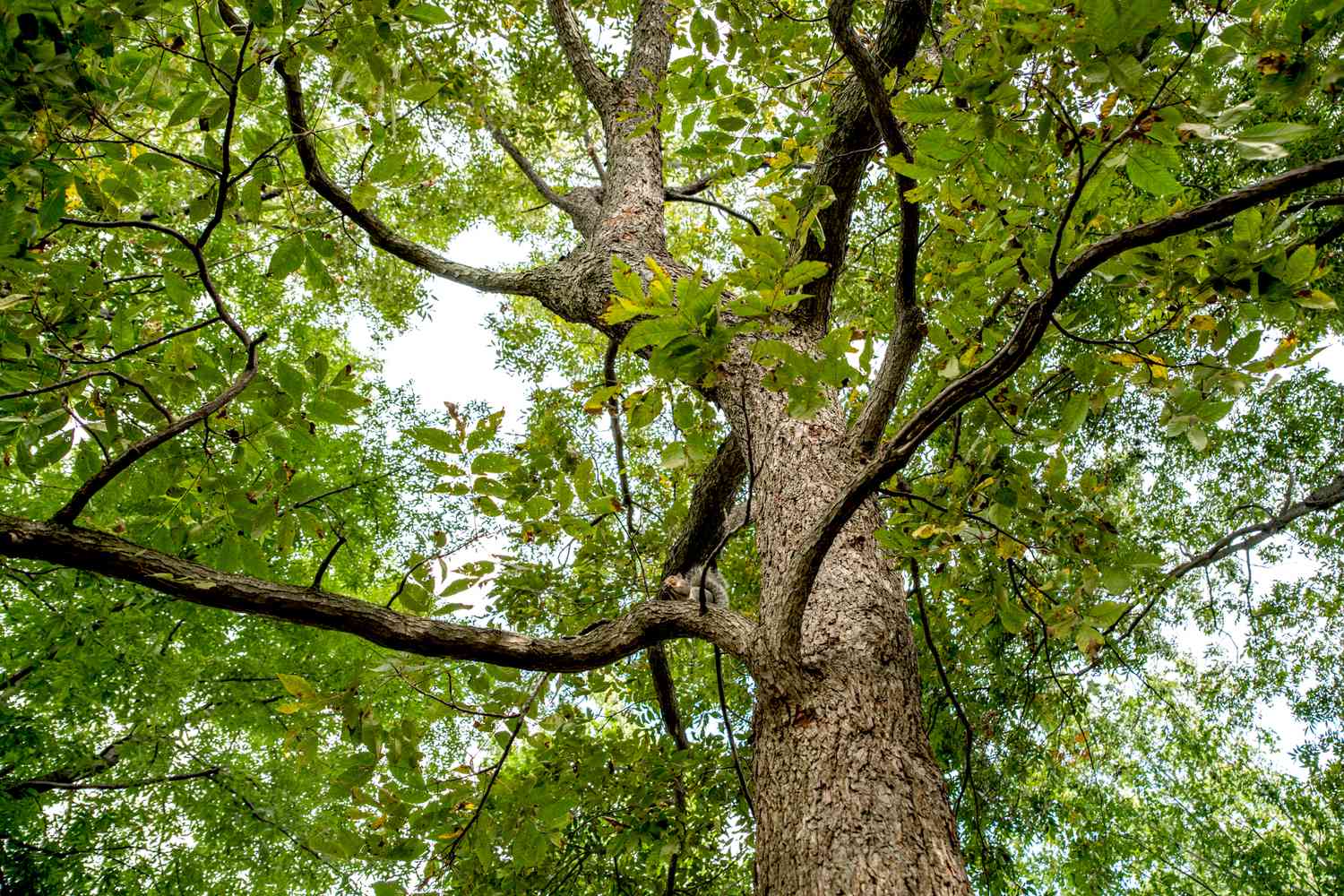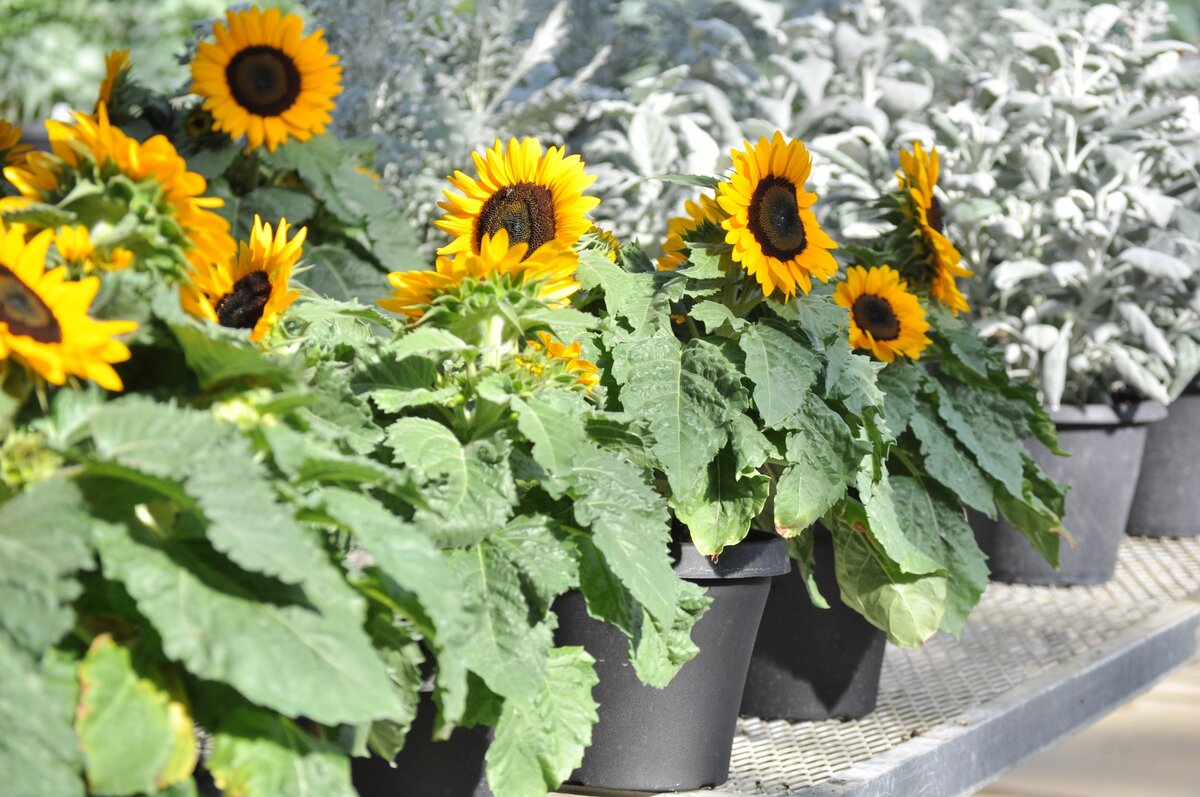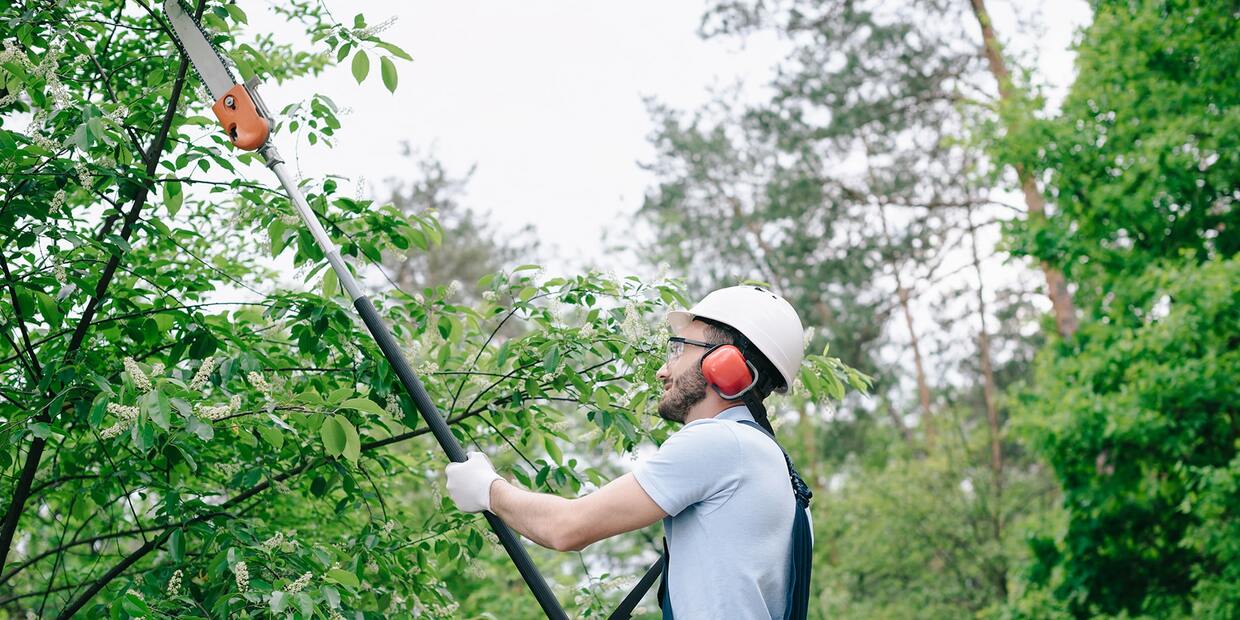Home>Gardening Basics>Getting Started>How To Cut Tall Weeds


Getting Started
How To Cut Tall Weeds
Modified: January 22, 2024
Learn the best techniques for getting started with cutting tall weeds. Find out how to effectively remove and manage those stubborn weeds in your garden.
(Many of the links in this article redirect to a specific reviewed product. Your purchase of these products through affiliate links helps to generate commission for Chicagolandgardening.com, at no extra cost. Learn more)
Table of Contents
Introduction
Tall weeds can be a nuisance in your yard or garden, affecting the aesthetics and overall health of your landscape. Not only do they compete with your desired plants for sunlight, water, and nutrients, but they can also serve as a breeding ground for pests and diseases. To maintain a well-maintained and beautiful outdoor space, it’s essential to know how to effectively cut tall weeds.
In this guide, we will walk you through the process of cutting tall weeds step by step. We’ll cover the tools and equipment you’ll need, safety precautions to keep in mind, the best time to tackle this task, and how to dispose of the cut weeds properly. We’ll also share tips on preventing the regrowth of tall weeds, ensuring that your efforts have a lasting impact on your landscape.
Remember, the key to successful weed management is both effective cutting techniques and understanding the lifecycles and growth habits of different weed species. By following the steps outlined in this guide, you’ll be equipped to tackle those pesky tall weeds and reclaim a weed-free space.
Tools and Equipment Needed
Before you begin cutting tall weeds, it’s important to gather the necessary tools and equipment. Here’s a list of items you’ll need to ensure a successful weed-cutting session:
- A sturdy pair of gloves: Protect your hands from prickly or thorny weeds and minimize the risk of cuts or blisters.
- Garden shears or a trimmer: Choose a tool that is appropriate for the size and thickness of the weeds you will be cutting. For smaller weeds, handheld garden shears will suffice, while a trimmer or brush cutter might be necessary for larger or more stubborn growth.
- Pruning saw or loppers: When dealing with woody or thick-stemmed weeds, a pruning saw or loppers will help you make clean, precise cuts.
- A weed removal tool: Sometimes, weeds can have deep roots that need to be fully removed from the ground. A weed removal tool, such as a weeding fork or a dandelion digger, can be handy for this purpose.
- A wheelbarrow or garden waste bin: You’ll need a container to transport and dispose of the cut weeds. A wheelbarrow or a sturdy garden waste bin will make this task much more manageable.
- Protective clothing: Wear long pants, a long-sleeved shirt, and closed-toe shoes to shield yourself from potential scratches, bites, and exposure to allergens.
- Safety goggles: It’s important to protect your eyes from any debris that may fly during the cutting process.
Having these tools and equipment ready will ensure that you can efficiently and effectively tackle the task of cutting tall weeds. Remember to inspect your tools before use to ensure they are in good working condition and always follow the manufacturer’s instructions for safe operation.
Safety Precautions
When working with tools and cutting tall weeds, it’s essential to prioritize your safety. Here are some important safety precautions to keep in mind:
- Wear protective gear: Always wear gloves, long pants, a long-sleeved shirt, closed-toe shoes, and safety goggles. This protective clothing will shield you from thorns, bites, allergens, and debris.
- Inspect your tools: Before starting the task, inspect your tools for any damage or defects. Ensure that the blades are sharp and in good condition. Dull blades can make cutting more difficult and increase the risk of accidents.
- Clear the area: Remove any obstacles, such as rocks or tree branches, from the area where you will be cutting weeds. This will prevent tripping hazards and potential accidents.
- Be aware of your surroundings: Take note of any power lines, irrigation systems, or other potential hazards in the vicinity. Avoid cutting weeds near these hazards to prevent accidents.
- Use proper cutting techniques: Take your time and use controlled cutting motions. Avoid jerking or twisting movements that could throw you off balance or cause muscle strain.
- Work in daylight: Choose a well-lit time of day to ensure good visibility while cutting weeds. Working in daylight minimizes the risk of accidental cuts and injuries.
- Stay hydrated: Cutting tall weeds can be physically demanding work, especially in hot weather. Drink plenty of water to stay hydrated and take breaks when needed.
- Dispose of weeds properly: After cutting the weeds, dispose of them in a designated green waste bin or compost pile. Avoid leaving them on the ground, as they can reseed and regrow.
Remember, your safety should always be the top priority. By following these safety precautions, you can minimize the risk of accidents and injuries while cutting tall weeds.
Identifying Tall Weeds
Before you start cutting tall weeds, it’s important to be able to identify them accurately. Different weed species may require different approaches and methods of control. Here are some tips to help you identify tall weeds:
- Observe the growth pattern: Tall weeds often have a fast growth rate and can quickly reach heights that exceed surrounding plants. Look for plants that are significantly taller than the desired vegetation in your garden or yard.
- Examine the leaves: Take a close look at the leaves of the plants. Notice their shape, size, and arrangement on the stem. Some common tall weeds, such as thistles or dandelions, have distinctive lobed or toothed leaves.
- Inspect the stems: Tall weeds often have sturdy, thick, or woody stems. Look for plants with thick stems that stand out among the surrounding vegetation. Some weeds may also have hairy or spiky stems.
- Look for flowers or seed heads: Many tall weeds produce distinct flowers or seed heads. Pay attention to the color, shape, and size of the flowers or seed heads. This can help you identify specific weed species, such as sunflowers or foxtails.
- Refer to weed identification resources: There are numerous online and offline resources available that provide detailed information and images of common weed species. Consult these resources to help you identify unfamiliar tall weeds.
Remember, accurate identification is crucial for effective weed control. By being able to identify tall weeds, you can develop a targeted approach to cut and manage them, leading to a healthier and more attractive landscape.
Best Time to Cut Tall Weeds
The timing of when you cut tall weeds can greatly impact the effectiveness of your efforts. Choosing the right time ensures that the weeds are at their most vulnerable and that your cutting will have a lasting impact. Here are some guidelines to help you determine the best time to cut tall weeds:
- Early morning or late evening: It’s generally best to cut tall weeds during the cooler parts of the day to avoid excessive heat and minimize stress on both the weeds and yourself. Early morning or late evening is often an ideal time.
- After rainfall or irrigation: Cutting weeds when the soil is moist can make the task easier as the weeds are more pliable and easier to cut. This also helps minimize soil disturbance and reduces the chances of weed regrowth.
- Before weed flowering: Cutting tall weeds before they flower and set seed is crucial for preventing further weed spread. By removing the flowers, you reduce the chances of them dispersing seeds and propagating further.
- Prioritize annual weeds: Annual weeds complete their life cycle within a year, making them easier to control through cutting. Focus on cutting annual weeds before they have a chance to produce seeds.
- Tackle perennial weeds in their growing season: Perennial weeds have deeper root systems and can be more persistent. Cutting them during their active growth phase, when they are directing energy towards growth, makes it more challenging for them to regrow.
Keep in mind that the best time to cut tall weeds may vary depending on your specific region and climate. It’s essential to observe the growth patterns and qualities of the weeds in your area to determine the optimal time for cutting.
Step-by-Step Guide on Cutting Tall Weeds
Now that you have the necessary tools and understand the best time to cut tall weeds, let’s dive into the step-by-step process. Follow these instructions to effectively cut and manage tall weeds in your yard or garden:
- Survey the area: Take a walk around your yard or garden to identify the areas with tall weed growth. Prioritize the sections that require immediate attention.
- Put on protective gear: Before you start cutting, make sure you wear gloves, long pants, a long-sleeved shirt, closed-toe shoes, and safety goggles to protect yourself from any potential hazards.
- Select the appropriate tool: Choose the appropriate tool for the size and thickness of the weeds. Use handheld garden shears or trimmers for smaller weeds and opt for pruning saws or loppers for larger or woody weeds.
- Approach the weeds: Stand beside the weed and position yourself at an angle for better leverage. This will allow you to cut through the stems cleanly without straining your wrist or arm.
- Make precise cuts: Depending on the weed’s thickness, use the appropriate tool to make clean cuts as close to the ground as possible. Avoid leaving behind stubs, as they can hinder the regrowth of desired plants.
- Dispose of the cut weeds: Collect the cut weeds in a wheelbarrow or garden waste bin for proper disposal. Be sure to prevent the weeds from dispersing seeds or regrowing by securely containing them.
- Perform regular maintenance: To prevent the regrowth of tall weeds, perform regular maintenance by cutting or pulling any new weed growth. Consistency is key in keeping your yard or garden free from unwanted weeds.
By following this step-by-step guide, you can effectively cut tall weeds and begin reclaiming control over your outdoor space. Remember to pace yourself and take breaks when needed, as this task can be physically demanding depending on the size of the area and the severity of the weed growth.
Disposal of Cut Weeds
Proper disposal of cut weeds is essential to prevent them from regrowing or spreading seeds. Here are some guidelines to follow when disposing of the cut weeds:
- Transfer the cut weeds: Collect the cut weeds in a wheelbarrow or garden waste bin for easy transport to the disposal area. This will help contain the weeds and prevent them from reseeding or spreading.
- Composting: If the cut weeds consist of non-invasive plant species and do not contain seeds or reproductive parts, you can add them to your compost pile. Ensure that the compost pile reaches high temperatures to effectively break down any potential weed seeds.
- Green waste bin: Many municipalities provide green waste bins for the disposal of plant materials. Check if your local waste management offers this service and dispose of the cut weeds accordingly. Be sure to check the guidelines for what is appropriate to put in the green waste bin.
- Curbside pickup: Some areas provide curbside pickup for yard waste. Bundle the cut weeds and place them at the designated collection area following the guidelines provided by your local waste management.
- Avoid spreading seeds: If the cut weeds contain seeds or reproductive parts, it’s crucial to prevent them from spreading. Seal them in a plastic bag or container and dispose of them with your regular household waste.
Remember, disposing of cut weeds responsibly is important to prevent the spread of invasive species and maintain a weed-free environment. By following these disposal methods, you can effectively remove the cut weeds from your yard or garden without causing further weed problems.
Preventing Regrowth of Tall Weeds
After cutting tall weeds, it’s crucial to take measures to prevent their regrowth. Here are some strategies to help you prevent the return of tall weeds:
- Mulch your garden beds: Applying a layer of mulch around your plants helps to suppress weed growth by blocking sunlight and preventing weed seeds from germinating. Choose organic mulch, such as shredded bark or straw, for optimal results.
- Regularly inspect and remove new growth: It’s important to regularly inspect your yard or garden for any new weed growth. As soon as you notice new weeds, promptly remove them by hand or use appropriate tools to prevent them from establishing and spreading.
- Improve soil health: Maintaining healthy soil can help discourage weed growth. Ensure that your soil is well-nourished with organic matter, properly drained, and balanced in terms of pH. Healthy plants can better compete with weeds for nutrients and sunlight.
- Practice proper irrigation: Overwatering can create favorable conditions for weed growth. Water your plants deeply and less frequently to encourage deep root growth in your desired plants, making it more difficult for weeds to establish themselves.
- Consider using weed barriers: In areas prone to frequent weed growth, weed barriers or landscape fabrics can be effective in preventing weeds from germinating and growing. Install them before adding mulch or other ground cover.
- Rotate crops and diversify plantings: In vegetable gardens, rotating crops and diversifying plantings can help disrupt weed cycles. Weeds that are specific to certain crops will struggle to establish if the crops are rotated or interplanted with different species.
- Maintain healthy plant spacing: Proper plant spacing allows for better airflow and sunlight penetration, creating a less favorable environment for weed growth. Follow the recommended spacing guidelines for your plants to reduce weed competition.
By implementing these preventive measures, you can significantly reduce the chances of tall weeds regrowing and taking over your yard or garden. Consistency and diligence in weed management are key to maintaining a weed-free landscape.
Final Tips and Considerations
As you work on cutting tall weeds and maintaining a weed-free landscape, here are some final tips and considerations to keep in mind:
- Stay consistent: Regular monitoring and maintenance are essential for preventing the regrowth of tall weeds. Dedicate time each week to inspecting your yard or garden for any new weed growth and promptly remove them.
- Stay educated: Continuously educate yourself about different weed species, their growth habits, and effective control methods. This knowledge will empower you to make informed decisions and take appropriate actions to manage weeds.
- Be proactive: As soon as you notice tall weeds, take action to cut or remove them. The earlier you address weed growth, the easier it will be to manage.
- Explore alternative control methods: Cutting tall weeds is just one method of control. Depending on the severity of the weed problem, you may need to explore other options such as herbicides, organic weed control methods, or seeking professional help.
- Encourage beneficial insects: Some insects, such as ladybugs or lacewings, can help control weed populations by feeding on pests that may attract weeds. Create a pollinator-friendly environment to attract these beneficial insects to your garden.
- Stay environmentally conscious: When using herbicides or other chemicals, follow the instructions carefully and consider using environmentally friendly options. Avoid using harmful chemicals that can negatively impact your plants, soil, and beneficial organisms.
- Regularly maintain your tools: Clean and maintain your cutting tools regularly to ensure they are in good working condition. Dull blades can make cutting more difficult and increase the risk of accidents.
- Seek professional assistance when needed: If you have a large-scale weed problem or struggle to manage the weeds on your own, consider consulting with a professional landscaper or weed control expert for advice and assistance.
Remember, managing tall weeds requires ongoing effort, but with proper techniques and consistent maintenance, you can maintain a weed-free and visually appealing outdoor space.
Conclusion
Cutting tall weeds is an important part of maintaining a healthy and aesthetically pleasing yard or garden. By following the steps outlined in this guide, you can effectively tackle the task of cutting tall weeds and prevent their regrowth. Remember to gather the necessary tools, prioritize your safety, and properly identify the weeds before starting the cutting process.
Timing is crucial, so choose the best time to cut tall weeds. Consider the weather conditions, growth stage of the weeds, and the ability to dispose of the cut weeds properly. Regular maintenance, such as inspecting for new weed growth and implementing preventive measures, is key to long-term weed control.
Throughout the process, it’s important to stay informed and adapt your approach as needed. Explore different control methods, stay environmentally conscious, and seek professional assistance when necessary. With dedication, consistency, and knowledge, you can successfully manage and prevent the regrowth of tall weeds, resulting in a healthier and more beautiful outdoor space.






